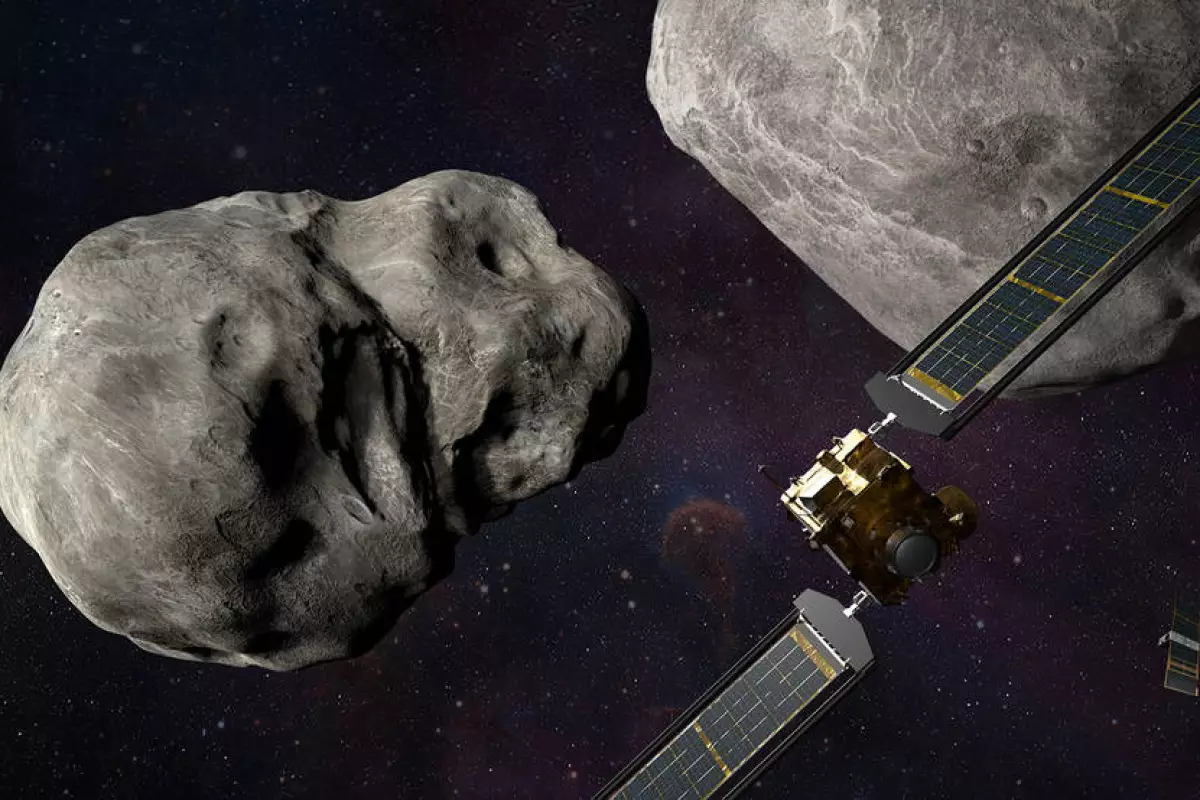An audacious planetary defense mission reached a historic crescendo today, with a NASA probe spectacularly crashing into the asteroid Dimorphos, obliterating itself in the process. The world-first attempt to bounce an asteroid off course has been hailed an initial success, and is considered an important practice run for how we might deflect a hazardous asteroid in the future.
The DART (Double Asteroid Redirection Test) mission is an attempt to alter the orbit of Dimorphos around its larger sibling, Didymos, both part of a double asteroid system currently around 11 million km (7 million miles) from Earth. The asteroid was not in danger of colliding with Earth but was the ideal candidate to help us prepare for one that might. The DART probe was launched last November and today concluded its 10-month journey in dramatic fashion.
The spacecraft zeroed in on its target at speeds in excess of 14,000 mph (22,500 km/h), and was left to its own devices for its dying moments. Around 20 minutes before impact, mission control celebrated an important milestone, confirming that the probe was “precision locked” onto Dimorphos.
Five minutes before impact, the team celebrated another, more nerve-wracking milestone. From this point, the team couldn’t send the spacecraft any more commands, with its onboard navigation systems capturing images of the asteroid as it closed in, and using those images to autonomously guide itself to the target.
The final moments before DART’s demise were marked by glitchy but scientifically significant images of the Dimorphos surface growing larger and larger onscreen. The team then erupted in celebration as the signal was lost, confirming impact with the asteroid and destruction of the spacecraft. These up close images will be retrieved and studied over the coming days and weeks to better understand the makeup of Dimorphos.

As for how much DART was able to shift Dimorphos off course, that will be a long-term scientific project facilitated by a nearby CubeSat deployed a fortnight ago to photograph the event, and telescopes on the ground. These observatories will monitor the double asteroid system to precisely measure the resulting orbit of Dimorphos, which is expected to be shortened by several minutes.
In 2024, the European Space Agency will also launch another spacecraft to the binary asteroid system to study the effects of the DART impact from up close. NASA’s broadcast of today's historic mission can be seen below, with the impact taking place at the 1-hour-16-minute mark.





